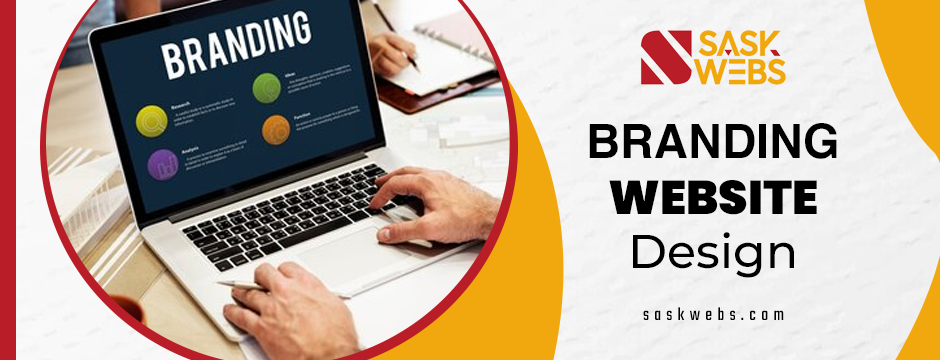
Creating a branding website design that accurately reflects your business identity is essential for establishing a strong online presence. A well-designed website not only attracts visitors but also communicates your brand’s values, mission, and personality. In this guide, we’ll explore the key elements and strategies to ensure your website design effectively mirrors your business identity.
1. Understand Your Brand Identity
Before diving into website design, it’s crucial to have a clear understanding of your brand identity. This includes your brand’s mission, vision, values, target audience, and unique selling propositions. Your brand identity should be the cornerstone of your website design for guiding all aesthetic and functional decisions.
Steps to Define Your Brand Identity:
- Mission and Vision: Clearly articulate your brand’s purpose and long-term goals.
- Values: Identify the core principles that drive your business.
- Target Audience: Understand the demographics, interests, and behaviours of your ideal customers.
- Unique Selling Proposition (USP): Identify what distinguishes your brand from the competition.
2. Choose the Right Colour Palette
Colours play a significant role in conveying your brand’s personality and emotional appeal. Each colour evokes different feelings and associations, so choosing a colour palette that aligns with your brand identity is essential.
Tips for Selecting a Color Palette:
- Consistency: Use colours that are already part of your brand’s existing visual identity.
- Emotional Impact: Choose colours that reflect the emotions you want to evoke in your audience. For example, blue often signifies trust and professionalism, while red can convey energy and passion.
- Contrast and Readability: Ensure that text and important elements are easily readable against your background colours.
3. Select Appropriate Typography
Typography is a key element in website design. It influences readability and brand perception. Your choice of fonts should complement your brand’s personality and enhance the overall design.
Considerations for Typography:
- Font Pairing: Use a combination of fonts for headings and body text that are visually harmonious. Avoid using too many different fonts.
- Readability: Choose fonts that are easy to read on both desktop and mobile devices.
- Brand Alignment: Select fonts that align with your brand’s style. For example, a modern brand might use sleek, sans-serif fonts, while a traditional brand might opt for classic serif fonts.
4. Design a User-Friendly Layout
A well-organized layout is essential for a positive user experience and effective branding. Your website’s structure should guide visitors seamlessly through your content and encourage engagement.
Key Layout Considerations:
- Navigation: Make sure your website’s navigation is user-friendly and straightforward. Clearly labelled menus and a well-organized structure help visitors find information quickly.
- Hierarchy: Use visual hierarchy to highlight important information and guide visitors’ attention. This can be achieved through varying font sizes, colours, and placement.
- Responsiveness: Design your website to be mobile-friendly. A responsive design ensures that your site looks and functions well on all devices, from smartphones to desktops.
5. Incorporate Brand Imagery

Imagery plays a crucial role in reinforcing your branding website design. High-quality images that align with your brand’s style can enhance visual appeal and make your website more engaging.
Types of Brand Imagery:
- Custom Photography: Use original photos that showcase your products, services, or team. Custom photography can help personalize your brand and differentiate it from competitors.
- Brand Illustrations: Incorporate illustrations that reflect your brand’s personality and style. These can add a unique touch to your website design.
- Consistent Style: Ensure that all images and graphics follow a consistent style and colour scheme that aligns with your brand identity.
6. Craft Compelling Content
Content is a vital component of your branding website design. It should not only be informative and engaging but also reflect your brand’s voice and values.
Content Creation Tips:
- Brand Voice: Develop a tone and style for your content that reflects your brand’s personality. This could be formal, casual, friendly, or authoritative, depending on your target audience.
- Clear Messaging: Ensure that your content clearly communicates your brand’s key messages and value propositions.
- Call to Action (CTA): Include compelling CTAs that guide visitors toward desired actions, such as making a purchase, signing up for a newsletter, or contacting your business.
7. Implement Effective Branding Elements
Incorporate key branding elements throughout your website to reinforce your brand’s identity and create a cohesive experience.
Essential Branding Elements:
- Logo: Display your logo prominently on your website. It should be easily recognizable and serve as a visual anchor for your brand.
- Tagline: Include your brand’s tagline or slogan in strategic locations to reinforce your message and enhance brand recall.
- Brand Icons: Use custom icons that align with your brand’s style and enhance the visual appeal of your website.
8. Ensure Brand Consistency
Consistency is important for building a strong brand identity. Ensure that all elements of your website design are aligned with your brand guidelines and create a cohesive experience for visitors.
Maintaining Consistency:
- Design Guidelines: Develop a set of design guidelines that outline the use of colours, fonts, imagery, and other branding elements.
- Regular Audits: Periodically review your website to ensure that all branding elements are up-to-date and consistent with your brand identity.
9. Test and Iterate
Finally, testing and iteration are essential for refining your branding design. Gather feedback from users, analyze website performance, and make necessary adjustments to improve the overall user experience.
Testing Strategies:
- User Testing: Conduct usability testing to gather insights on how users interact with your website and identify areas for improvement.
- Analytics: Use website analytics tools to track user behaviour, engagement, and conversion rates.
- Feedback: Solicit feedback from customers, stakeholders, and design experts to gain different perspectives on your website’s effectiveness.
Conclusion
Creating a branding website design that accurately reflects your business identity requires careful consideration of various elements, including colour palette, typography, layout, imagery, and content. By aligning your website design with your brand’s identity and values, you can create a compelling online presence that resonates with your target audience and enhances your brand’s reputation. Remember to continuously test and refine your design to ensure that it remains effective and engaging. Ready to elevate your brand? At SaskWebs, we turn your business identity into a stunning website that speaks volumes and drives results.






